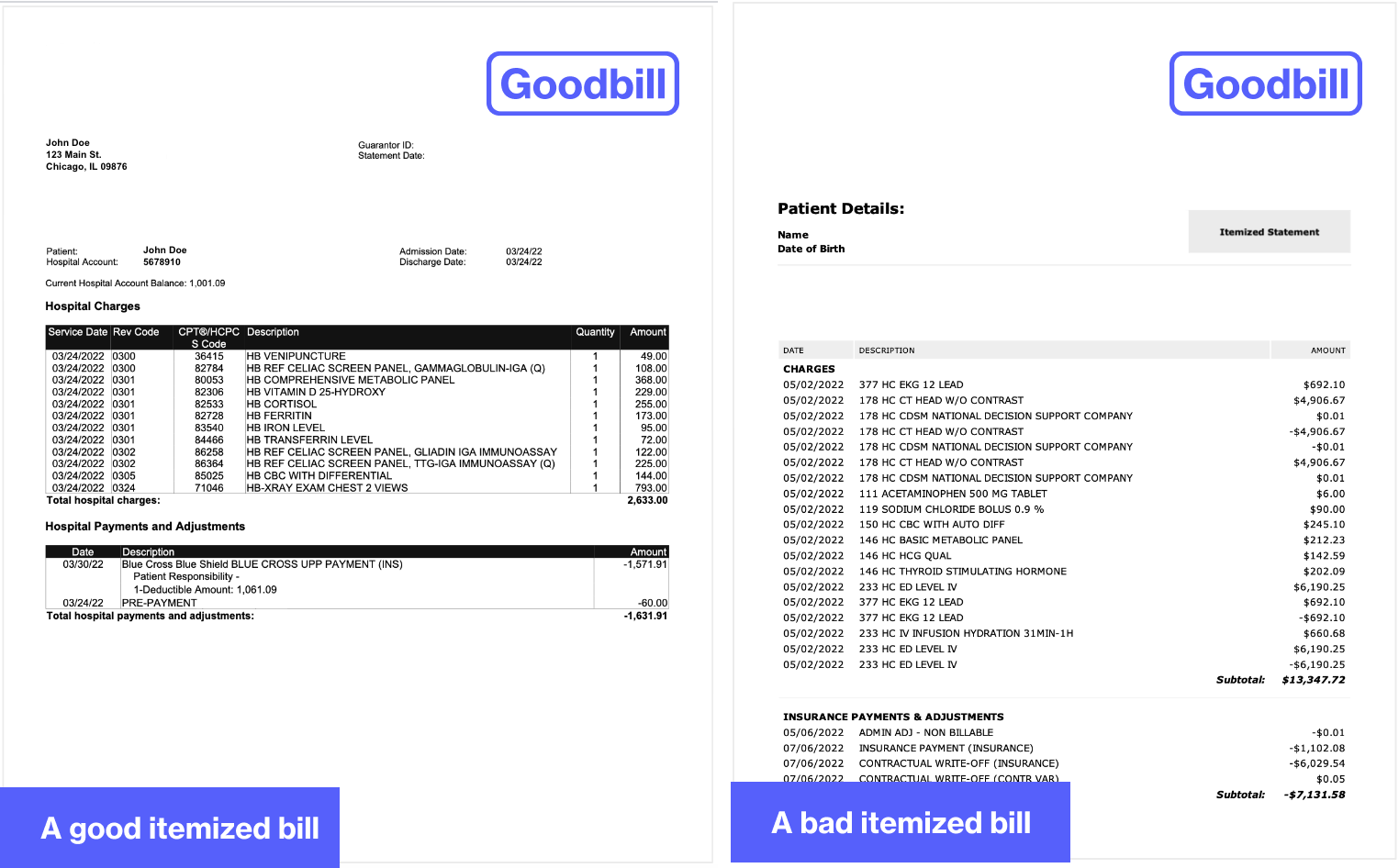Itemized Bill - Explained
A hospital’s itemized bill is the key to understanding exactly which services went into your hospital’s calculations, unlocking your ability to flag and negotiate inflated prices or flat-out errors. While some hospital bills may resemble an itemized bill, the real deal contains procedure identifiers called CPT or HCPCS (pronounced: hick-picks) codes that break down your charges using industry-standard language, enabling you to identify duplicate charges and cross-check prices. (Don’t confuse these with internal procedure codes that hospitals often list for their own purposes.)
Getting your itemized bill is the first step in negotiating your hospital bill. Unfortunately, most hospitals won’t send your itemized bill unless you ask for it. The good news is that once you do request your itemized bill, your hospital is legally required to send it to you within 30 days. That still gives you plenty of time to research your bill before it goes to collections or affects your credit.
Itemized bills contain CPT or sometimes HCPCS codes, which are generally 5-character industry standard codes. Many hospitals don’t send your itemized bill unless you ask for it, but they’re legally required to within 30 days of your request.
So how can you get an itemized bill from your hospital, and what the heck are all the other bills you’re getting in the mail? We’ll walk you through examples here.
Itemized Bill
A good itemized bill contains standard CPT or HCPCS codes, which are usually 5-characters long and start with a number or letter.
An itemized bill is the hospital’s line-by-line breakdown of the procedures and services you received. The first thing to know is: Most hospitals won’t send your itemized bill, though they may send you something that looks similar, or just a consolidated summary.
The telltale sign of a real itemized bill are CPT codes (Current Procedural Terminology codes) or sometimes HCPCS (pronounced: hick-picks) codes (Healthcare Common Procedure Coding System), which are the universal language used across hospitals and medical coders to identify a specific procedure. These are generally five characters long, sometimes seven, and start with numbers or letters like “8,” “9,” “J” or “S.” Itemized bills will also include service dates, revenue codes, and the quantity and charges for each procedure.
Your hospital uses these codes to assign prices to your procedures, which then add up to the total balance on your bill. They’re also what Goodbill uses to make the case for negotiating hospital bills. Our software and medical coding experts use the codes to catch errors when comparing your itemized bill to your medical record.
EXAMPLES OF HOSPITAL BILL ERRORS
Duplicate charges
Charges for a procedure you didn’t receive
Charges for a procedure you didn't medically need
Wrong prices
Unbundling, which is when a single procedure is split into smaller, often more expensive procedures
Upcoding, which is when a listed procedure is more complex than justified
Hospitals are legally required under the HIPAA Privacy Rule to send your itemized bill within 30 days of your request. Goodbill handles this for you by requesting your bill on your behalf.

